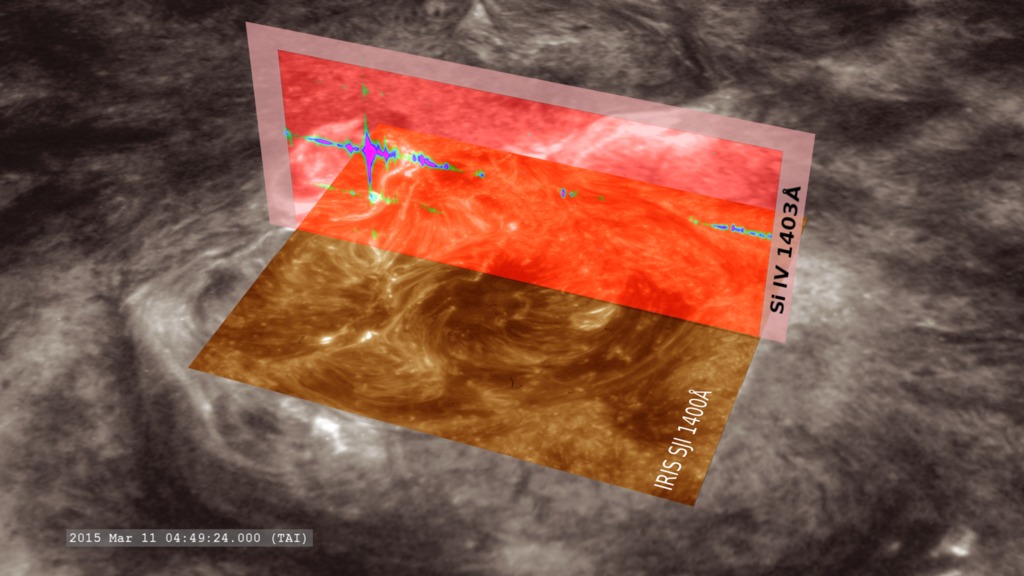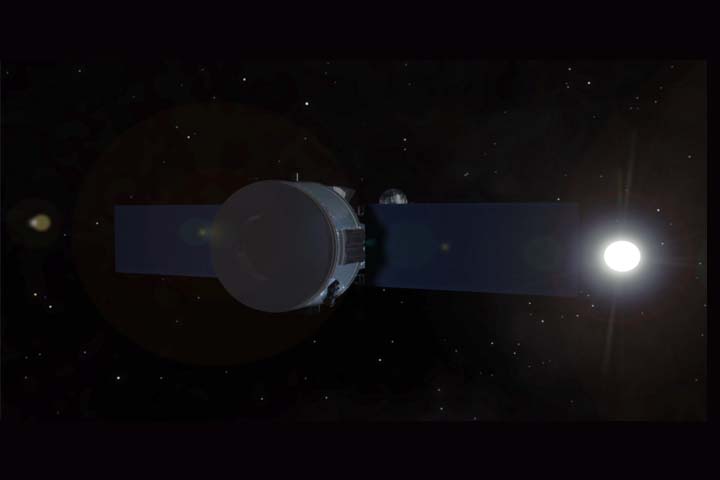Taking A Slice Of Light

Sometimes studying the sun requires looking at it one strip at a time.
How does energy and solar material move from the sun’s surface and through its million-degree atmosphere? That’s the question NASA’s IRIS spacecraft is helping scientists to explore. Activity on the sun, such as solar flares and coronal mass ejections, are partially powered by changes in a layer of the sun’s atmosphere called the chromosphere. To better understand the properties of this dynamic region, an instrument aboard the spacecraft collects images of the sun and a special kind of data called spectra. Spectra are basically measurements that show the intensity of light at specific wavelengths. Once every few seconds, IRIS obtains this data from a thin slice of the sun. The data can reveal the speed and temperature of solar material observed by the spacecraft. The findings are used in models that help scientists probe the mechanisms behind solar eruptions, which can impact the space environment around our planet. Watch the video to learn more.
Find out more about how NASA's IRIS spacecraft observes the sun in this video.

IRIS takes close-ups of the sun and collects spectral data from thin strips (dark line, above) within each image.

Scientists look for correlations between features seen in IRIS images (yellow) and spectra (orange) to learn more about the sun.

IRIS orbits approximately 400 miles above Earth, and has made observations of the sun since its launch in 2013.
Credits
Please give credit for this item to:
NASA's Goddard Space Flight Center
-
Producer
- Genna Duberstein (USRA)
-
Animator
- Tom Bridgman (Global Science and Technology, Inc.)
-
Writer
- Karen Fox (ADNET Systems, Inc.)
-
Scientists
- Bart De Pontieu (Lockheed Martin Solar and Astrophysics Lab)
- Adrian Daw (NASA/GSFC)
Missions
This page is related to the following missions:Release date
This page was originally published on Thursday, July 23, 2015.
This page was last updated on Wednesday, May 3, 2023 at 1:49 PM EDT.

